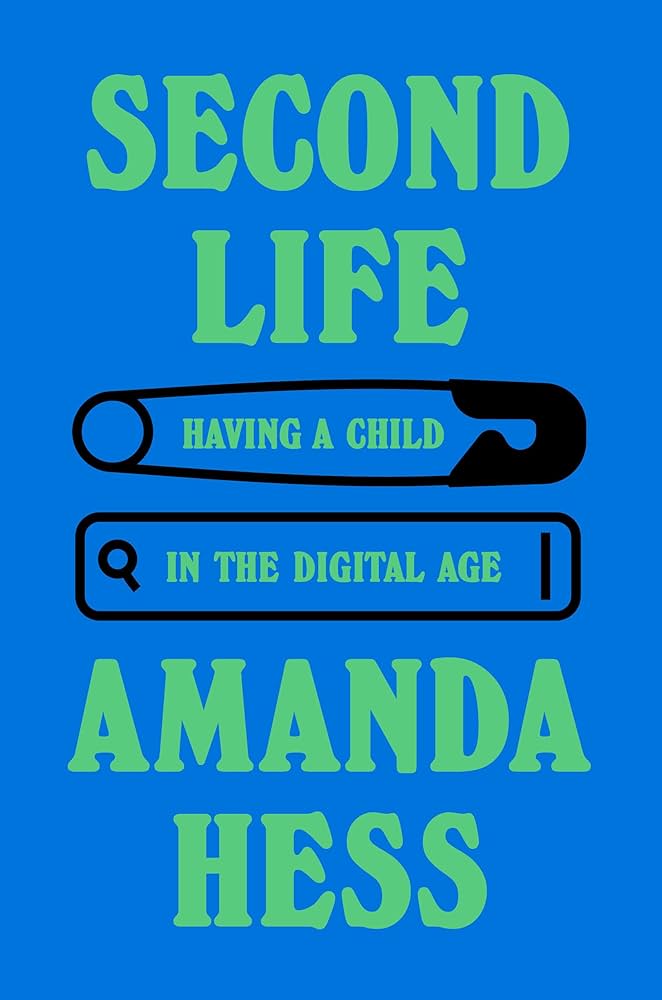Having a Child in the Digital Age
Before modern medicine, superstition mediated pregnancy and childbirth. Once, divine wrath or distressing mental images risked what was called a monstrous birth. To reduce risk today, pregnant women consult prophetic prenatal technologies and the ceaseless cacophony of digital media. Twice pregnant, New York Times pop culture and internet reporter Amanda Hess found herself both drawn to and repelled by media advice and the collection of data enticed by apps or insisted on during clinical encounters.

Her book Second Life: Having a Child in the Digital Age—part wry memoir, part savvy investigative reporting—asks whether current technologies deliver a better, if not perfect, baby or the maternal well-being they augur. She, even more significantly, worries about the consequences, personal, relational, and ethical, of pursuing perfection.
Hess couldn’t resist interacting with chatty, advice-giving apps. One first tracks her fertility and then, in weekly installments, shows her what a developing “creepily realistic CGI fetus” looks like. (Another app likens fetal development to the temptations on Parisian bakery shelves. A macaron, for instance.) Visual creepiness aside, Hess has unsettling thoughts about surrendering intimate information about her body to unknown recipients. She discovers that a popular app she regularly consults was developed by two brothers in Belarus backed by venture capitalists. Its surveillance exposed her to endless marketing schemes that hardly considered anyone’s well-being or financial resources. Curious about the history of fertility tracking before and after apps, Hess discovers a throughline of troubling eugenic ideologies. It travels through the advice of a popular pregnancy influencer.
Deep into Hess’s first pregnancy, a “concerning” routine ultrasound detected what could be Beckwith-Wiedemann syndrome (BWS), a rare genetic condition. Its possibility sent Hess anxiously scanning the internet, against her doctor’s advice, for medical information and possible maternal causes. Was it the wine? The Ativan? A fever? Her age? Unspecified guilt followed. But neither the internet, genetic testing, nor her doctor could reassure her about a cause or the possible extent of the condition. The internet images she sought of children with the full range of BWS anomalies hardly quelled her anxieties. Only after her son’s birth was a form of BWS confirmed.
Hess sympathizes with the wish to deliver a healthy baby and the temptation to seek any available service or technology to that end. After all, that’s what she wanted. However, the prospect of birthing a child with an anomalous body leads her to question the meaning of the ubiquitous parental qualification: “As long as the baby is healthy.” Healthy, she finds, translates to normal. Anticipating a not-normal child makes her feel protective of her son even before his birth. After it, she deflects thoughtless remarks from strangers about his enlarged tongue protruding from his lips. (Corrective surgery later enables less compromised breathing and speech.) She and her husband care for and about him for the distinct person he is. About her initial anxieties about his body, Hess writes, “My nightmare . . . ended when I met my son.”
Hess’s standout chapter “Growth” recounts her evolving response to her son’s imperfections and her efforts to manage others’ IRL and internet responses to him—a task she finds essential to parenting him. I hope this chapter is widely read, certainly by future parents, but also by clinicians, genetic counselors, and those who teach them.
Some accounts of caring for an imperfect child cast the child and the parental relationship as special. Some view chronic illness or disability as a familial burden. Hess does neither. Instead, she folds caring for her son into the course of her life and her family’s. In that way, she continues a contribution of Michael Berube’s complicated 1996 Life as We Know It, however, adding a millennial’s navigations of current medical technologies and media static. Hess further envisions a world that participates in the care of all children, one that refuses to blame or isolate families with less-than-perfect children. That world would reduce parental anxieties more than screening for concerning “problems.” Philosopher of care and mother of a profoundly disabled child, Eva Kittay, would agree.

Some readers might say that Amanda Hess’s financial and other resources make her generous perspective possible. She agrees. She’s half of a two-parent family. As journalists, she and her husband have more flexible schedules than countless other parents. But in the world Hess encourages, parental status would be irrelevant to their child’s care.
Without being prescriptive, Hess’s lively, self-reflective story provokes readers to think twice about rejecting imperfect children—anyone’s—and to notice the eugenic logic underwriting rejection. Her book tests the claim that ever-evolving technologies enhance maternal well-being, empower parental choice, and guarantee healthy babies. (Ironically, a researcher Hess encountered reported on increasing evidence of BWS in IVF conceptions, many intended to screen for anomalies.) In fact, far more children are permanently harmed during their lives than are born ill or disabled. Rather than relying on the billion-dollar industry of prenatal testing, aren’t we better off, Hess asks, accepting and taking better care of all children however they’re born?
Second Life: Having a Child in the Digital Age
Amanda Hess
Doubleday, 2025, 272 pages










